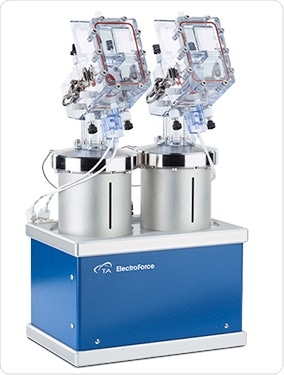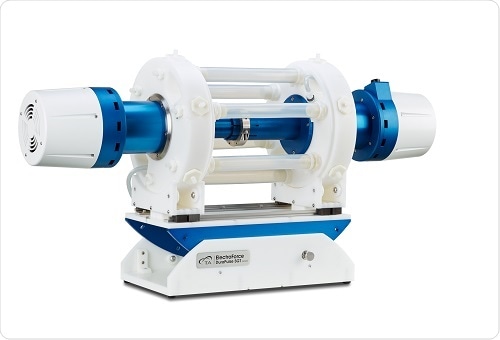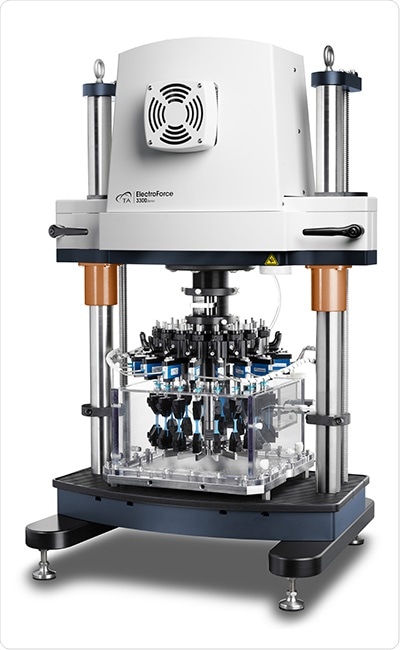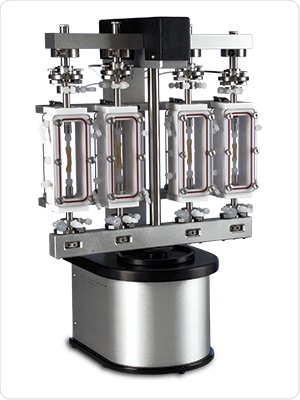As we enter the second half of 2021 and COVID-19 vaccines bring us closer to ending the pandemic, other areas of biomedical progress can now move back into the spotlight.
Cardiovascular disease remains the leading cause of death around the world, and heart disease deaths increased by 4.8% in the US last year.
Researchers are making fascinating advancements to take better care of cardiovascular patients through reliable treatments, personalized care, and life-saving devices. Take a look at these four areas of recent progress that are sure to bring about changes in the rest of 2021 and the years to come.
Advancements in heart valve replacements
Nonrheumatic valvular diseases account for millions of cardiovascular cases and deaths annually. Interventional valve replacements play a crucial role in saving lives, and new, minimally invasive technologies are transforming treatment.
Traditional replacement valves are difficult to implant, leading to complicated and expensive surgical procedures that are often too risky for many patients experiencing heart valve disease.
Furthermore, these valves are concerning for use on younger people as they require valves with longer lifespans. These disadvantages greatly limit otherwise effective valves from maximizing their capacity to help patients.
Over the past few years, researchers have been working to bridge this gap with a new minimally invasive transcatheter heart valve and have made great progress thanks to TA Instruments’ DuraPulse™ Heart Valve Test Instrument (HVT).

Image credit: TA Instruments
For example, in a recently published study, new valve designs were tested using the DuraPulse HVT’s superior pressure control capabilities and innovative test chamber design.
The sample valves’ reliability was studied using durability tests specified by the ISO 5840 test standard for heart valves, and valves that successfully met these testing standards were approved to move on to clinical trials.
Once these new valves are on the market, patients will benefit from their streamlined design, easier implantation and excellent durability. These and many other heart valve designers, manufacturers and cardiologists are innovating impactful heart valve solutions which should continue to improve the lives of many patients in the future.
Improved stents in all application areas
Over the past three decades, cardiovascular stents have transformed from experimental technology into everyday life-saving devices that restore proper circulation and assist in surgical procedures. Today, the most common types of stents include stent grafts for aortic aneurism repair, urethral/urinary stents and coronary stents.
Whether they are made by 3D printing or traditional manufacturing, all stents need to meet international standards, such as ISO 25539-2, ASTM F2477 and ASTM F3211, to verify their safety before use.
TA Instruments’ DuraPulse Stent/Graft Test Instrument (SGT) and MSF16 Multi-Specimen Fatigue Instrument are industry leading durability test instruments that help stent developers meet and exceed safety requirements while ensuring an accelerated, yet accurate testing program.

The SGT from TA Instruments. Image credit: TA Instruments
Since testing has become more accessible and easier to use, researchers are now able to evaluate stents under specific conditions to determine their safety for more specific implant scenarios.
In these situations, scientists need complete control over testing parameters so that they can collect accurate data that reflects a stent’s performance within the body for each specific case.
The SGT can be applied in these circumstances due to its flexibility and ease of use. Researchers recently tested multiple stent grafts using an SGT and determined which one was the perfect match for their patient’s rare case. As medicine becomes more personal, running unique laboratory tests on a case-by-case basis will likely become increasingly common.
Advanced materials enhance the quality of life
From the smallest components to fully formed medical devices, implantable materials require thorough testing throughout every stage of their development.
Advanced materials, such as acrylic resins or superalloy metals, are important for the advancement of many medical devices. They need to be strong and resilient to build successful and safe implants, especially for those that see repeated loading for years or even decades of use.
The ElectroForce 3300 is used in cutting-edge studies that subject implantable materials to repeated stresses to evaluate their durability and help ensure safety for patients.

Image credit: TA Instruments
The ElectroForce 3300 is configurable to meet most researchers’ needs, including exerting forces up to 3000 N, and helps prostheses developers meet ASTM and ISO standards while simplifying the testing process.
For higher sample throughput, researchers choose TA Instruments’ MSF16 Multi-Specimen Fatigue Instruments. The MSF16 can simultaneously test up to 16 specimens at one time and allows users to generate S/N curves or constant life plots faster and with higher statistical confidence levels (e.g. ASTM F3211) than ever before.
Once the materials, such as resins or superalloys, are characterized for their mechanical properties, then researchers must move on to testing complete prostheses or devices to validate that the as-built components or devices will be safe and reliable.
When needing to test several complete devices quickly, scientists turn to TA Instrument’s DuraPulse SGT and HVT Instruments. As the progress towards more durable and safer implants continues to advance, researchers rely on TA Instruments’ suite of reliable testing tools to further their advancements.
Researchers advanced understanding of natural artery degradation
Although we have finally sequenced the complete human genome, there is still a great deal to be discovered about the regular physiological behavior of our own bodies.
Many of the body’s physical and mechanical components change with age. One such natural process is enzymatic degradation, by which tissues are altered when enzymes break down proteins. Scientists know that enzymatic degradation occurs but they are still making discoveries about its effect on specific parts of the body.
One recent study made progress in testing the effects of proteolysis on carotid arteries. Sample arteries were tested on the ElectroForce® Multi-Specimen BioDynamic® 5270, a powerful axial and pulsatile mechanical bioreactor.

Image credit: TA Instruments
The 5270 has four chambers that can simultaneously run independent tests for maximum productivity or run the same test to gather reproducible results with statistical relevance.
Researchers observed important changes in carotid arteries after enzymatic degradation, and their findings continue to help scientists understand the complex properties of blood vessels.
References
- Cao, H., Wu, M. H., Zhou, F., McMeeking, R. M., Ritchie, R. O. (2020). The influence of mean strain on the high-cycle fatigue of Nitinol with application to medical devices. Journal of the Mechanics and Physics of Solids, 143. https://www.sciencedirect.com/science/article/pii/S002250962030291X?via%3Dihub
- Diaz-Arnold, A. M., Vargas, M/ A., Shaull, K. L., Laffoon, J. E., Qian, F. (2008). Flexural and fatigue strengths of denture base resin. The Journal of Prosthetic Dentistry, 100(1), 47-51. https://www.thejpd.org/article/S0022-3913(08)60136-5/fulltext
- Kuang, D., Lei, Y., Yang, L., Wang, Y. (2020). Preclinical study of a self-expanding pulmonary valve for the treatment of pulmonary valve disease. Regenerative Biomaterials, 7(6), 609-618. https://academic.oup.com/rb/article/7/6/609/5896101?login=true
- Trabelsi, O., Dumas, V., Breysse, E., Laroche, N., Avril, S. (2020). In vitro histomechanical effects of enzymatic degradation in carotid arteries during inflation tests with pulsatile loading. Journal of the Mechanical Behavior of Biomedical Materials, 103. https://www.sciencedirect.com/science/article/abs/pii/S1751616119302243
- Zhang, R., Crawford, S., Forbes, T., Cole, J. H., King, M. W. (2018). In Vitro Fatigue Evaluation of Chimney Endovascular Aneurysm Repair: A Case Study. Journal of Vascular Surgery, 68(3), e92. https://www.sciencedirect.com/science/article/pii/S0741521418316276
About TA Instruments
 The ElectroForce® products by TA instruments comprise the most comprehensive portfolio of medical device testing solutions. ElectroForce instruments are designed to characterize the mechanical properties and fatigue limits of medical devices to meet development requirements and gain regulatory approval while reducing time to market. For more than 25 years, medical device manufacturers have trusted ElectroForce as the world leader in accelerated fatigue test instruments.
The ElectroForce® products by TA instruments comprise the most comprehensive portfolio of medical device testing solutions. ElectroForce instruments are designed to characterize the mechanical properties and fatigue limits of medical devices to meet development requirements and gain regulatory approval while reducing time to market. For more than 25 years, medical device manufacturers have trusted ElectroForce as the world leader in accelerated fatigue test instruments.
Sponsored Content Policy: News-Medical.net publishes articles and related content that may be derived from sources where we have existing commercial relationships, provided such content adds value to the core editorial ethos of News-Medical.Net which is to educate and inform site visitors interested in medical research, science, medical devices and treatments.